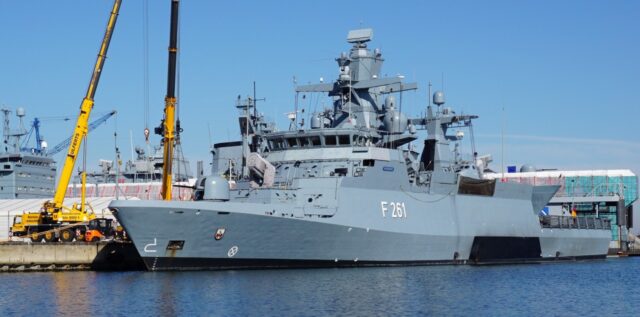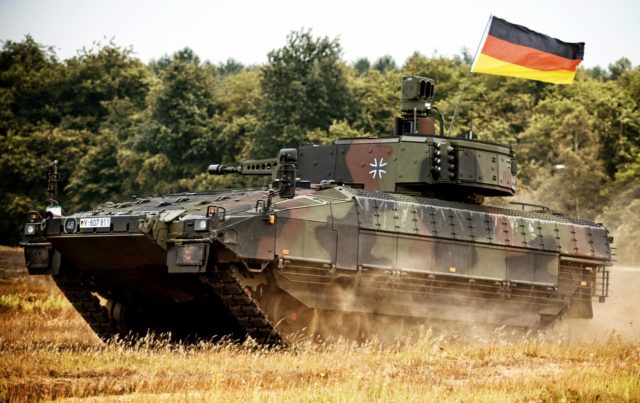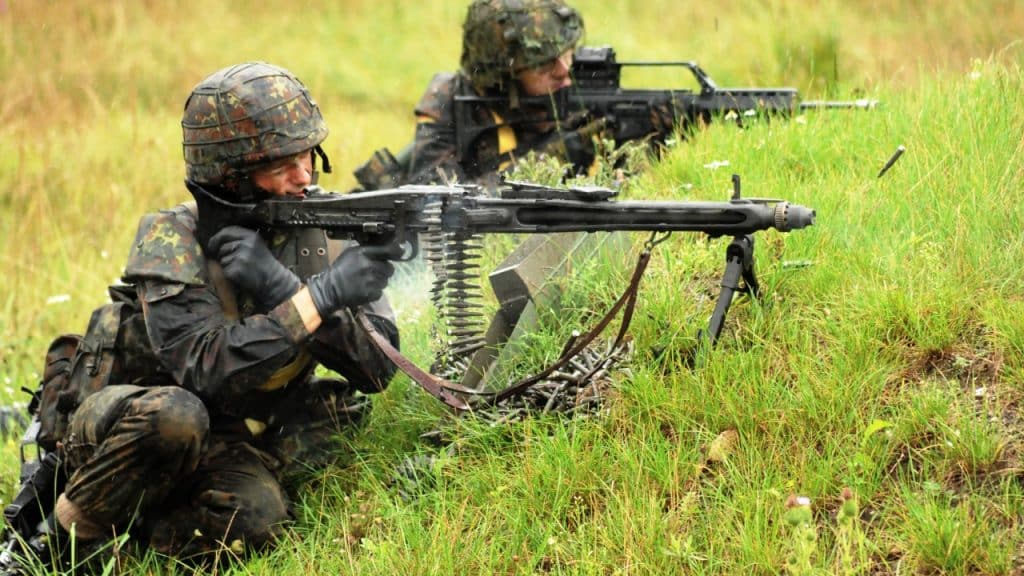The German defense ministry has determined what will be spent on EUR 100 billion from the special fund for rearming the Bundeswehr (Sondervermögen) announced by Chancellor Olaf Scholz on February 27. There was no big surprise, although how neglected the land forces (Heer) were treated, still shocking. The air force is the biggest winner, although it doesn’t have as many reasons to be satisfied as you might think.
The final decisions on the division of the cake were made at the defense minister’s meeting on October 28. It was the “hour of truth”, as the Spiegel weekly stated. The newspaper notes that until the last moment the military was not sure how much anyone would get. The ministry wanted to bring them to a fait accompli.
Work on allocating funds for rearmament, or rather retrofitting, of the Bundeswehr lasted several months, not only due to the need to allocate limited funds.
One thing that needs to be given back to Germany is that it takes seriously the question of where to get the 100 billion from, so as not to make empty promises, not to overburden the state and ensure the transparency of the process. This was done by the Federal Audit Office based in Bonn. This was the second reason that the fund took eight months to develop. The auditors were ruthless with the initial design, considering the documents presented to them as having “significant shortcomings” and requiring “fundamental changes”.
German fighters at RAAF Base Darwin.
(Department of Defense, LACW Emma Schwenke)
As Spiegel informs, once the formal and legal situation has been brought under control, it turned out that the budget was exceeded by EUR 9 billion. So cuts were necessary. The Luftwaffe emerged victorious from the subsequent scuffles, while Heer and Marine remained on the ice.
Victorious Luftwaffe
From the very beginning, it was known that the air force would take the largest part of Sondervermögen. Aviation was to receive as much as EUR 40.9 billion. It was dictated by urgent modernization needs. The first place is the purchase of the F-35A Lightning II multi-role combat aircraft, which are to replace the Tornadoes strike as carriers of nuclear weapons. The next places are taken by the development of the ECR / SEAD version of the Eurofighter and the purchase of the CH-47F Chinook heavy transport helicopters.
The problem is that Berlin has not yet disclosed a more specific schedule of approved projects. The acquisition of the F-35A seems to be a certainty, as is the work on Eurofighter ECR / SEAD. The latter is the main goal of the German arms industry, so it is a project that is both necessary and ambitious.
It is not known what percentage of funds will be received by the Luftwaffe, but it can be concluded from Spiegel’s information that it has increased, and the lion’s share of it will be consumed by the anti-missile shield project. This is another project that has been dragged over the years and the costs of which are constantly rising. It is not surprising then that Berlin has come forward with a proposal to create a European anti-missile defense system. The idea was welcomed by most European Union countries. Only France and Poland refused.

The TRML-4D radar is part of the IRIS-T SLM anti-aircraft system.
(Maciej Hypś, Konflikty.pl)
Contrary to appearances, the focus on missile defense is not good news for the air force and, in fact, for the entire Bundeswehr. This means dropping out of the list of priorities for modernizing medium-range air defense (Taktisches LuftVerteidigungsSystems), which is another weapon system needed “here and now”. It is also known that spending on modernization, or rather reconstruction, of short-range and short-range air defense (Luftverteidigungssystem Nah- und Nächstbereichsschutz) is to be cut by half.
Meanwhile at sea
There is no good news for the Navy either. Marine may forget about the third pair of 126 frigates (formerly MKS 180), and there will be no replacement for the first tranche of K130 type corvettes. In 2020, there were arguments that upgrading the five first series units would be almost as costly as building new units. This led to the idea of withdrawing the oldest corvettes and building new ones.

Magdeburg Corvette (F 261) type K 130.
(Ein Dahmer, Creative Commons Attribution-Share Alike 4.0 International)
The Idas system is also in question. The aim of the project is to develop a laser-based self-defense system for submarines. Idas is to ensure the ability to combat ZOP helicopters, low-flying planes, air and surface drones. Work on a similar system is carried out in the USA. Idas’s development is to continue, but there will be no orders yet. Speaking of submarines, there is still no decision to purchase additional 212CD units.
The number of P-8A Posiedon maritime patrol aircraft on order is expected to increase from five to eight, although there is no chance of a total of twelve machines, as requested by the Navy. Funding for this program has been cut from EUR 1.9 billion to EUR 1.2 billion. In practice, this means the fulfillment of the black scenario for France and the resignation of Germany from the project of the European Maritime Airborne Warfare System (MAWS).
Heer – like Isaur’s unwanted child or slave
The already neglected land forces will feel the most severely affected by the financial reshuffle. This is all the more surprising as, as in the Cold War era, the land forces are Germany’s main contribution to NATO, and at the same time play the most important role in the country’s defense.

The Puma infantry fighting vehicle during the dynamic show in Meppen.
(Dirk Vorderstraße, Creative Commons Attribution 2.0 Generic)
There will be no successor to the Fuchs APC in the foreseeable future. The scale of modernization of this type of vehicle will also be limited. Only 115 of the more than 600 vehicles used by the Bundeswehr will be brought to the Fuchs 1A8 standard. The total demand for 6 × 6 vehicles is estimated at a thousand cars. There is also no chance of increasing the production rate and the number of ordered Puma infantry fighting vehicles. It is not known what will be the fate of the increase in the number of Boxers, necessary in view of the plans to transform one of the three divisions into an average union.
Already in February, comments were made from the military and experts that the amount given by Chancellor Scholz would only allow the most urgent matters to be settled. Full resuscitation of the German armed forces after three decades of neglect requires at least an additional 200 billion euros, plus a rapid increase in defense spending to 2% of GDP and keep it at that level for many years. However, even the greatest optimists in the Ministry of Defense do not believe in such a positive scenario. One of the main authorities among German journalists writing about the army and security in a column in the Europäische Sicherheit und Technik asks rhetorically where the epochal change announced by Scholz (Zeitenwende) happened and who even came up with this term.
See also: Serbia wants to buy the Cypriot Mi-35 and become a “helicopter regional power”
Gertrud Zach, US Army

